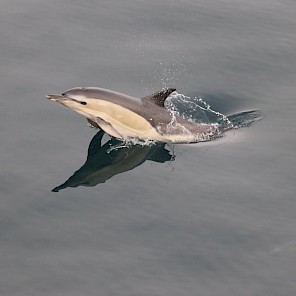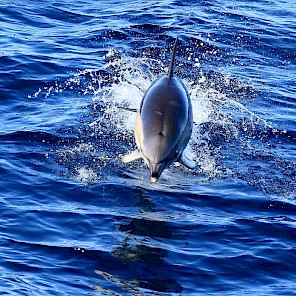| | Assessments of Abundance and Distribution of Cetaceans and Marine Mammal By-catch are now available on our assessment portal along with a pilot assessment of Marine Mammal By-catch in Arctic Waters.
These assessments contribute to our 2023 Quality Status Report (QSR) which, when viewed together, build a picture of the overall condition of the marine environment of the North-East Atlantic and progress towards achieving its vision of a clean, healthy and biologically diverse North-East Atlantic Ocean, which is productive, used sustainably and resilient to climate change and ocean acidification. The results will also be used by OSPAR Contracting Parties to inform policy decisions.
We hope you enjoy these Indicator Assessments. Please do contact us with any comments at [email protected]
Image1: Common dolphin (Delphinus delphis) in the Bay of Biscay in Autumn 2021 © Observatoire Pelagis, Image 2: Common dolphin (Delphinus delphis) in the Bay of Biscay in Autumn 2021 © Observatoire Pelagis, Image 3: Grey seal (Halichoerus grypus) off Brighton Beach © Olle Akesson |
|
|  | | Abundance and Distribution of Cetaceans | Harbour porpoise distribution shifted southward within the Greater North Sea. Abundance appears stable except for a decline in the Irish and Celtic Seas. Assessed populations of coastal bottlenose dolphin appear stable except for a decline in the Sado Estuary. Overall, more frequent large-scale surveys are needed for future quantitative assessment. |  READ MORE
READ MORE |
| |  | | Marine Mammal By-catch | This assessment concluded by-catch is a significant pressure affecting marine mammal (Harbour Porpoise; Common Dolphin; Grey Seal) populations in the North-East Atlantic (Greater North Sea (Region II), Celtic Seas (Region III), Bay of Biscay and Iberian Coast (Region IV)), with harbour porpoise and common dolphin exceeding the thresholds. Grey seal did not exceed the thresholds. The assessment is underpinned by a conservation objective attempting to capture European ambition for by-catch levels, subject to adjustment for future assessments to accommodate new evidence |  READ MORE
READ MORE |
|
| |
| | |
|